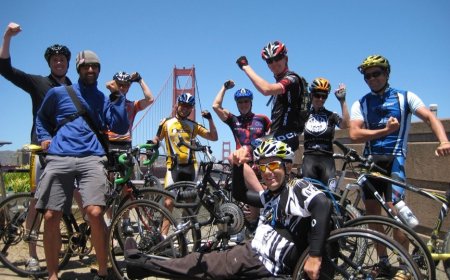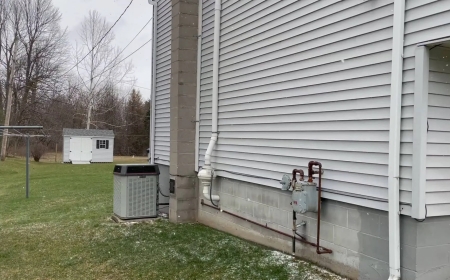How To Hike Flag Pole Hill Dallas Views
How to Hike Flag Pole Hill Dallas Views Flag Pole Hill in Dallas, Texas, is one of the city’s most underrated natural treasures — a quiet, elevated vantage point offering sweeping panoramic views of the urban skyline, distant rolling hills, and the winding paths of the Trinity River. Despite its proximity to downtown, few visitors know how to access this hidden gem, and even fewer understand the b
How to Hike Flag Pole Hill Dallas Views
Flag Pole Hill in Dallas, Texas, is one of the city’s most underrated natural treasures — a quiet, elevated vantage point offering sweeping panoramic views of the urban skyline, distant rolling hills, and the winding paths of the Trinity River. Despite its proximity to downtown, few visitors know how to access this hidden gem, and even fewer understand the best ways to experience it safely and sustainably. This guide is your definitive resource for hiking Flag Pole Hill, from planning your route to capturing the perfect sunset shot. Whether you're a local seeking solitude or a visitor looking for authentic Dallas scenery, this tutorial will equip you with everything you need to know to make the most of your journey.
Flag Pole Hill isn’t just a hill — it’s a symbol of Dallas’s lesser-known natural beauty. Unlike the well-trodden trails of White Rock Lake or the manicured gardens of the Dallas Arboretum, Flag Pole Hill offers raw, unfiltered views of the city’s evolution. The hill gets its name from a historic flagpole once installed at its peak, a relic of early 20th-century civic pride. Today, the flagpole is gone, but the view remains — and it’s better than ever.
This guide is designed for hikers of all experience levels. You don’t need specialized gear or endurance training to enjoy Flag Pole Hill. What you do need is preparation, awareness, and respect for the environment. By following the steps and best practices outlined here, you’ll not only reach the summit with confidence but also contribute to preserving this fragile landscape for future visitors.
Step-by-Step Guide
1. Research the Location and Access Points
Flag Pole Hill is located in the Oak Cliff neighborhood of Dallas, near the intersection of S. Hampton Road and W. Camp Wisdom Road. Unlike formal parks with clearly marked entrances, this area is semi-wild and lacks official signage. The most reliable access point is from the trailhead off S. Hampton Road, just west of the intersection with W. Camp Wisdom Road. Use GPS coordinates 32.7050° N, 96.7842° W to locate the approximate starting point.
Before heading out, verify current access conditions using local hiking forums or the Dallas Parks and Recreation website. While the hill is not part of a city-managed park, it sits on public land and is open to foot traffic. Avoid private property boundaries — fences and “No Trespassing” signs are present on the eastern and southern edges. Stick to the established dirt path that begins near a small metal gate near a cluster of live oaks.
2. Choose the Right Time of Day
The optimal time to hike Flag Pole Hill is during the late afternoon, ideally between 4:30 PM and 6:30 PM. This window provides the best lighting for photography and allows you to avoid the peak Texas heat, especially during spring and summer months. Sunset views from the summit are legendary — the sun dips behind the downtown skyline, casting long golden shadows across the Trinity River and illuminating the glass towers of the Arts District.
If you prefer solitude and cooler temperatures, consider an early morning hike at sunrise. The mist rising from the river combined with the quiet hum of waking birds creates a serene atmosphere. Morning light also minimizes glare on camera lenses and reduces the risk of sunburn. Avoid hiking during midday (11 AM – 3 PM) in summer, as temperatures can exceed 100°F with little shade along the trail.
3. Prepare Your Gear
Flag Pole Hill is a short hike — approximately 0.6 miles round trip from the main trailhead — but terrain can be uneven. Proper footwear is essential. Wear closed-toe hiking shoes or trail runners with good grip. Sandals, flip-flops, or worn-out sneakers increase the risk of slips on loose gravel or slick roots.
Bring a small daypack with:
- At least 16 oz of water per person
- A lightweight windbreaker or sun shirt (temperatures can drop quickly after sunset)
- Sunscreen and lip balm with SPF 30+
- A hat or cap
- A fully charged smartphone with offline maps downloaded
- A small first-aid kit with bandages and antiseptic wipes
- A lightweight tripod or phone mount if you plan to photograph the skyline
Do not carry glass containers, single-use plastics, or food that attracts wildlife. The area is home to coyotes, raccoons, and birds of prey — feeding them or leaving trash disrupts the local ecosystem.
4. Follow the Trail
From the trailhead, the path is clearly visible as a worn dirt track winding uphill through mixed hardwoods and prickly pear cacti. The incline is moderate, with a steady 12–15% grade. There are no stairs or railings — this is a natural trail, not a paved path.
As you ascend, watch for:
- Tree roots crossing the path — step over them carefully
- Loose rocks on the right side — stay centered on the trail
- Wildlife signs — deer tracks, scat, or claw marks on tree trunks
The trail splits once near the halfway point. Take the left fork — the right fork leads to a private property boundary. Continue upward until you reach a flat, open plateau with a 360-degree view. This is the summit. There is no marker, monument, or plaque — just a circle of grass, scattered rocks, and the unmistakable vista of Dallas stretching below.
5. Explore the Summit and Capture the View
At the top, take a moment to orient yourself. Use your phone’s compass app or a physical map to identify key landmarks:
- Downtown Dallas: Directly northeast — look for the Bank of America Plaza (the tallest building in Texas)
- Trinity River: A winding ribbon of water to the north and east
- Highway 183: The elevated highway cutting through the southern horizon
- White Rock Lake: A glinting blue oval to the northeast, visible on clear days
For photography enthusiasts, the best angles are from the western edge of the summit, where the skyline is framed by the silhouette of trees. Use the rule of thirds: position the horizon along the lower third of your frame to emphasize the sky and clouds. Bracket your exposures if shooting during golden hour — the contrast between bright sky and dark buildings can challenge camera sensors.
Stay on the summit for no more than 20–30 minutes to minimize soil erosion. Avoid sitting or standing on the fragile grassy patches — walk on the rock outcrops instead. Leave no trace. Take only photos, leave only footprints.
6. Descend Safely
Descending is often more dangerous than ascending. Fatigue, loose gravel, and fading light increase the risk of falls. Walk slowly and deliberately. Use trees or rocks for balance if needed. Do not shortcut down steep sections — this accelerates erosion and creates dangerous gullies for future hikers.
If you’re hiking at dusk, use your phone’s flashlight sparingly. Bright lights can disorient nocturnal animals and reduce your night vision. Consider carrying a red-light headlamp — it preserves your eyes’ ability to adjust to darkness and is less disruptive to wildlife.
7. Exit and Return to Your Vehicle
Follow the same trail back to the trailhead. Once you reach the bottom, check your surroundings for any gear you may have left behind. Double-check pockets and backpacks for small items like keys, phone chargers, or water bottles.
Before leaving, take a moment to appreciate the quiet. Flag Pole Hill is a place of reflection. Many hikers report feeling a sense of calm and perspective after visiting — a rare gift in a bustling metropolis.
Best Practices
Practice Leave No Trace Principles
Flag Pole Hill is not a designated park, which means there are no trash bins, restrooms, or rangers. Your responsibility as a visitor is to protect the land. Follow the seven Leave No Trace principles:
- Plan Ahead and Prepare — Know the weather, trail conditions, and local regulations.
- Travel and Camp on Durable Surfaces — Stick to the established trail. Avoid trampling vegetation.
- Dispose of Waste Properly — Pack out everything you bring in, including food wrappers, tissues, and apple cores.
- Leave What You Find — Do not pick flowers, collect rocks, or carve names into trees.
- Minimize Campfire Impacts — Fires are prohibited. Use a headlamp or battery-powered light instead.
- Respect Wildlife — Observe from a distance. Never feed animals.
- Be Considerate of Other Visitors — Keep noise low. Yield the trail to others. Share the view quietly.
Respect the Local Community
Flag Pole Hill sits on the edge of residential neighborhoods. Avoid parking on sidewalks or blocking driveways. Use designated street parking along S. Hampton Road. Do not leave belongings unattended in your car — theft is rare but possible. Keep your visit brief and respectful. If you encounter neighbors walking their dogs or jogging, smile and say hello. You’re a guest in their community.
Stay Aware of Weather and Environmental Conditions
Dallas weather is unpredictable. Summer thunderstorms can roll in without warning, turning dirt trails into muddy slicks. Check the National Weather Service forecast before you go. If lightning is predicted, postpone your hike. Flash floods are also a risk in low-lying areas near the Trinity River — avoid hiking after heavy rain.
In winter, temperatures can dip below freezing. Frost can make rocks slippery. Wear layers and bring gloves. In spring, poison ivy is common along the trail edges. Learn to identify it: “Leaves of three, let it be.” Wear long pants and avoid brushing against unknown shrubs.
Bring a Buddy
While Flag Pole Hill is generally safe, hiking alone increases risk. Bring a friend or join a local hiking group. If you must go solo, inform someone of your plans — share your expected return time and route. Enable location sharing on your phone. The trail is remote enough that cell service can be spotty in places.
Document and Share Responsibly
Many hikers post photos of Flag Pole Hill on social media, often tagging it as “secret spot” or “hidden Dallas view.” While sharing beauty is positive, avoid revealing exact GPS coordinates publicly. Overexposure leads to overcrowding, litter, and vandalism. Instead, describe the general area — “near Oak Cliff,” “off Hampton Road” — and encourage others to respect the land.
Volunteer and Advocate
Want to give back? Join a local conservation group like Friends of the Trinity River or Dallas Hiking Club. These organizations occasionally host trail cleanups and native plant restoration days at Flag Pole Hill and surrounding areas. Your time and effort help maintain the very landscape you love to explore.
Tools and Resources
Recommended Apps
Several mobile applications enhance your Flag Pole Hill experience:
- AllTrails — Search for “Flag Pole Hill Dallas” to view recent trail reports, photos, and user reviews. Download the offline map before you go.
- Gaia GPS — Offers topographic maps and elevation profiles. Use the “Terrain” layer to visualize the hill’s slope before you hike.
- Dark Sky — Provides hyperlocal weather forecasts with minute-by-minute precipitation predictions. Essential for timing your hike around storms.
- PhotoPills — A powerful tool for photographers. Use the “Sun & Moon” feature to plan your visit around golden hour or blue hour.
- Google Earth — Zoom in on the hill’s location to study its contours and identify potential access points from the air.
Recommended Gear
While you don’t need expensive equipment, a few items significantly improve comfort and safety:
- Merrell Moab 3 Hiking Shoes — Lightweight, durable, and excellent grip on loose terrain.
- Hydro Flask Water Bottle (32 oz) — Keeps water cold for hours and reduces plastic waste.
- Buff Multifunctional Headwear — Can be worn as a sweatband, neck gaiter, or sun shield.
- Black Diamond Trail Pro Trekking Poles — Helpful for balance on steep or uneven sections.
- Garmin inReach Mini 2 — Satellite communicator with SOS functionality for remote areas with no cell service.
- GoPro Hero 12 with Helmet Mount — Capture hands-free video of your ascent and summit view.
Local Organizations and Online Communities
Connect with others who share your interest in Dallas’s natural spaces:
- Dallas Hiking Club — Regular weekend hikes and meetups. Visit dallashikingclub.org.
- Friends of the Trinity River — Advocacy group focused on preserving riparian zones. Offers volunteer opportunities.
- Reddit: r/Dallas — Search “Flag Pole Hill” for firsthand accounts and photo threads.
- Instagram:
FlagPoleHillDallas
— A growing community of photographers sharing sunrise and sunset shots.
Books and Guides
For deeper context on Dallas’s natural history:
- Hidden Nature: Dallas’s Secret Parks and Trails by Linda Thompson — Includes a chapter on Flag Pole Hill’s ecological significance.
- The Trinity River: A History of Dallas’s Lifeline by James McPherson — Explains how the river shaped the city’s topography, including the formation of Flag Pole Hill.
- Leave No Trace: A Guide to the New Wild by Erin Brooks — Practical advice for responsible outdoor recreation in urban fringe areas.
Real Examples
Example 1: Sarah’s Sunset Hike — A Photographer’s Journey
Sarah, a freelance photographer from Fort Worth, first heard about Flag Pole Hill from a friend’s Instagram post. She planned her visit for a clear autumn evening. Using PhotoPills, she timed her arrival for 6:15 PM — 15 minutes before sunset. She brought her Canon EOS R5, a 24-70mm lens, and a carbon-fiber tripod.
She arrived at the trailhead with 45 minutes of daylight left. The hike up took 12 minutes. At the summit, she captured three distinct exposures: one for the glowing sky, one for the illuminated downtown towers, and one for the darkening river below. She blended them in Lightroom to create a single HDR image that later won first place in the Dallas Art Foundation’s “Urban Wilderness” contest.
Sarah says: “I’ve shot from atop the Reunion Tower, but nothing compares to the raw, unfiltered view from Flag Pole Hill. It feels like you’re standing on the edge of the city, not inside it.”
Example 2: The Lopez Family — A Weekend Tradition
The Lopez family from South Dallas has been hiking Flag Pole Hill every Sunday for the past five years. Their routine is simple: pack peanut butter sandwiches, trail mix, and water bottles. They bring their two children, ages 7 and 10, and make it a learning experience.
“We point out the birds — red-tailed hawks, cardinals,” says Maria Lopez. “We talk about how the river flows, why the hills are here. My kids know more about Dallas’s geography than most adults.”
They always bring a trash bag and pick up any litter they see — even if it’s not theirs. “We don’t want this place to disappear,” Maria says. “It’s our park.”
Example 3: The First-Time Hiker — Carlos’s Story
Carlos, a college student from Mexico City, had never hiked in Texas before. He was skeptical. “I thought Dallas was just skyscrapers and highways,” he says. But a class assignment on urban green spaces led him to Flag Pole Hill.
He arrived alone on a weekday afternoon. “I was nervous,” he admits. “I didn’t know if I’d get lost or if it would be boring.” But when he reached the top, he sat in silence for 20 minutes. “I saw the whole city — the highways, the bridges, the trees, the water. I felt like I understood Dallas for the first time.”
He posted a single photo on his Instagram — a wide-angle shot of the skyline with the caption: “I didn’t know this existed.” The post went viral in his hometown. He now leads student hiking groups to the hill every month.
FAQs
Is Flag Pole Hill open to the public?
Yes. Flag Pole Hill is located on public land and is accessible to all. There are no fees, permits, or official hours. However, visitors must respect private property boundaries and avoid trespassing.
How long does it take to hike Flag Pole Hill?
The hike is approximately 0.6 miles round trip and takes 20–30 minutes total, depending on pace. The ascent is steady but not strenuous. Allow extra time for photography and rest at the summit.
Are dogs allowed on the trail?
Dogs are permitted but must be kept on a leash at all times. The trail has poison ivy, sharp rocks, and wildlife — leashes protect both pets and the environment. Clean up after your dog immediately.
Is there cell service at the summit?
Cell service is generally available but can be inconsistent. Verizon and T-Mobile users report the strongest signals. AT&T users may experience dropped calls. Download offline maps and save emergency contacts before you go.
Can I bring a drone to capture aerial footage?
Drone use is discouraged and may violate FAA regulations near urban areas. Flag Pole Hill is within the Dallas-Fort Worth Metroplex flight corridor. Flying a drone without authorization could interfere with air traffic or violate privacy. Stick to ground-level photography.
What should I do if I see someone littering or damaging the trail?
Do not confront individuals directly. Instead, document the behavior with photos (without engaging) and report it to the Dallas Parks and Recreation Department via their online form at dallascityhall.com/parks. Your report helps authorities prioritize maintenance and education efforts.
Is Flag Pole Hill safe at night?
While the trail is generally safe, hiking after dark is not recommended. Visibility is low, wildlife is more active, and emergency response times are longer. Stick to daylight hours for the best experience.
Why is there no official sign or plaque at the summit?
Flag Pole Hill is not an officially designated park or monument. It exists as a natural landmark shaped by community use, not municipal planning. This lack of formal recognition is part of its charm — it remains uncommercialized and untouched by tourism infrastructure.
Can I camp at Flag Pole Hill?
No. Overnight camping, fires, and tents are prohibited. The area lacks facilities and is not zoned for recreation beyond day-use hiking.
How can I help preserve Flag Pole Hill?
Volunteer with local conservation groups, participate in cleanups, educate others about Leave No Trace, and avoid sharing exact GPS locations on public platforms. Every small action helps protect this unique space.
Conclusion
Flag Pole Hill is more than a viewpoint — it’s a quiet rebellion against the idea that cities must be concrete jungles. In a world where urban landscapes are increasingly dominated by billboards, traffic, and digital noise, Flag Pole Hill offers something rare: stillness. A moment where you can stand above the sprawl and see Dallas not as a collection of buildings, but as a living, breathing ecosystem shaped by water, wind, and time.
This guide has walked you through every step of the journey — from planning your route to capturing the perfect sunset. But the real value of Flag Pole Hill isn’t in the photos you take or the distance you hike. It’s in the quiet realization that beauty doesn’t always require grandeur. Sometimes, it’s found on a simple dirt trail, just beyond the edge of the city.
So lace up your shoes. Fill your water bottle. And go. Not because you need to check off a destination, but because you deserve to see Dallas — not as it’s advertised, but as it truly is.
And when you reach the top, take a breath. Listen. The city below is loud. But up here? Up here, the wind speaks louder than any skyline.




































